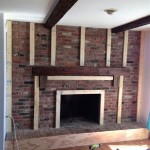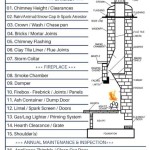Understanding Gas Fireplaces: A Comprehensive Guide
Gas fireplaces offer a convenient and efficient alternative to traditional wood-burning fireplaces. They provide warmth, ambiance, and a focal point for a room without the mess and maintenance associated with wood fires. This article explores the various aspects of gas fireplaces, including their types, benefits, installation, maintenance, and safety considerations. Understanding these elements is crucial for making informed decisions about choosing, using, and maintaining a gas fireplace.
The popularity of gas fireplaces stems from their ease of use. With the flick of a switch or press of a button, a gas fireplace ignites, providing instant heat. This eliminates the need to gather, stack, and tend to firewood. Moreover, gas fireplaces offer greater control over heat output, allowing users to adjust the flame and temperature to their desired level. This controllability contributes to both comfort and energy efficiency.
Gas fireplaces come in various designs and styles to suit different aesthetic preferences and home decor. From traditional log sets to contemporary glass media, there are options to complement any interior design. The versatility of gas fireplaces, coupled with their ease of use and efficiency, makes them a desirable heating solution for many homeowners.
Types of Gas Fireplaces
Gas fireplaces can be broadly categorized based on their venting system and installation method. Understanding these different types is essential for selecting the right option for a specific home and application.
Direct Vent Gas Fireplaces: These fireplaces are sealed units that draw combustion air from outside and vent exhaust gases directly outside through a coaxial pipe. The pipe consists of two layers: one for intake and one for exhaust. This design ensures that no room air is used for combustion and no exhaust gases enter the living space. Direct vent fireplaces are known for their safety and efficiency.
Vent-Free Gas Fireplaces: Also known as ventless fireplaces, these units do not require a chimney or vent. They burn gas very cleanly, producing minimal emissions. However, vent-free fireplaces require a properly sized room with adequate ventilation to ensure safe operation. Many jurisdictions have restrictions or outright bans on vent-free fireplaces due to concerns about indoor air quality and potential carbon monoxide buildup. They typically have oxygen depletion sensors that shut off the unit if oxygen levels drop to unsafe levels. It's crucial to check local building codes before installing a vent-free gas fireplace.
B-Vent Gas Fireplaces: These fireplaces use a dedicated chimney or vent flue to exhaust combustion gases. They draw combustion air from the room, which can lead to a slight reduction in energy efficiency compared to direct vent models. B-vent fireplaces require an existing chimney or the installation of a new vent system, which can add to the overall cost.
Gas Fireplace Inserts: These are designed to fit into existing wood-burning fireplaces. They offer a convenient way to convert a traditional fireplace to gas, providing the benefits of gas heat without the need for extensive renovations. Gas fireplace inserts typically use either direct vent or B-vent systems.
Gas Log Sets: These are designed to be placed inside an existing, properly functioning wood-burning fireplace. They consist of ceramic logs that are heated by a gas burner. Gas log sets can be vented or vent-free, depending on the specific model and local regulations. Vented gas log sets require the fireplace damper to be open during operation, while vent-free sets do not.
Benefits of Gas Fireplaces
Gas fireplaces offer several advantages over traditional wood-burning fireplaces, making them an attractive option for homeowners seeking convenience, efficiency, and aesthetic appeal.
Convenience: One of the primary benefits of gas fireplaces is their ease of use. With the push of a button or flip of a switch, the fire ignites instantly. There's no need to gather, chop, stack, or haul firewood. Similarly, there's no ash to clean up after each use. This convenience makes gas fireplaces a practical heating solution for busy individuals and families.
Efficiency: Gas fireplaces are generally more energy-efficient than traditional wood-burning fireplaces. Direct vent models are particularly efficient, as they draw combustion air from outside and vent exhaust gases directly outside, minimizing heat loss. Gas fireplaces also allow for precise control over heat output, enabling users to adjust the flame and temperature to their specific needs, further enhancing efficiency.
Cleanliness: Gas fireplaces produce significantly less air pollution than wood-burning fireplaces. They burn gas cleanly, emitting fewer particulate matter and other harmful pollutants into the atmosphere. This makes them a more environmentally friendly heating option, especially in areas with air quality concerns. The absence of ash and soot also contributes to a cleaner indoor environment.
Safety: Gas fireplaces are designed with safety features to prevent accidents and ensure safe operation. Many models include safety valves that automatically shut off the gas supply if the flame is extinguished. Direct vent models eliminate the risk of carbon monoxide entering the living space. While safety features are standard, regular maintenance and adherence to safety guidelines are crucial for preventing hazards.
Aesthetics: Gas fireplaces come in a wide range of styles and designs to complement any home decor. From traditional log sets to modern glass media, there are options to suit different aesthetic preferences. The realistic flames and glowing embers create a warm and inviting ambiance, making gas fireplaces a focal point for any room. The versatility in design makes them adaptable to various interior design schemes.
Installation and Maintenance
Proper installation and regular maintenance are essential for ensuring the safe and efficient operation of a gas fireplace. Improper installation can lead to gas leaks, carbon monoxide poisoning, and other hazards. Neglecting maintenance can result in reduced efficiency, performance issues, and potential safety risks.
Installation: Gas fireplace installation should be performed by a qualified and licensed professional. This ensures that the fireplace is properly connected to the gas supply, vented correctly, and meets all applicable building codes and safety regulations. The installer will also conduct a thorough inspection to ensure that the fireplace is functioning correctly and safely.
Gas Line Connection: Connecting a gas fireplace to the gas line is a critical step that requires expertise and precision. A gas leak can occur if the connection is not properly sealed. A professional installer will use appropriate fittings and sealants to ensure a leak-free connection. They will also perform a pressure test to verify the integrity of the gas line.
Venting: Proper venting is crucial for removing combustion gases from the living space. Direct vent fireplaces require specific venting configurations that must be followed precisely. B-vent fireplaces require a properly sized and functioning chimney or vent flue. Vent-free fireplaces require adequate room ventilation to prevent carbon monoxide buildup. The installer will ensure that the venting system is properly installed and meets all safety requirements.
Annual Inspection: It is recommended to have a gas fireplace inspected annually by a qualified technician. The inspection should include a thorough examination of the gas lines, burner, venting system, and safety features. The technician will also clean the burner and pilot light, check for gas leaks, and ensure that all components are functioning correctly.
Cleaning: Regular cleaning is important for maintaining the appearance and performance of a gas fireplace. The glass door should be cleaned periodically to remove soot and grime. The burner and pilot light should be cleaned annually to prevent clogs and ensure proper ignition. The logs or media should be inspected for damage and replaced as needed.
Carbon Monoxide Detection: A working carbon monoxide detector is essential for any home with a gas fireplace. Carbon monoxide is a colorless, odorless gas that can be deadly. The detector should be installed near the fireplace and tested regularly to ensure that it is functioning correctly. Replace batteries as needed and ensure the detector is within its recommended lifespan.
Preventative Maintenance: Regular maintenance can help prevent costly repairs and extend the lifespan of a gas fireplace. This includes cleaning the burner and pilot light, inspecting the gas lines for leaks, and checking the venting system for obstructions. Addressing minor issues promptly can prevent them from escalating into major problems.
Safety Precautions: Always follow safety precautions when operating a gas fireplace. Never leave the fireplace unattended while it is burning. Keep flammable materials away from the fireplace. Ensure that the room is adequately ventilated. If you smell gas, immediately turn off the fireplace and contact a qualified technician. Never attempt to repair a gas fireplace yourself unless you are a qualified professional.
Troubleshooting: Familiarize yourself with common gas fireplace problems and their potential solutions. This can help you diagnose and address minor issues yourself. However, for more complex problems, it is always best to consult a qualified technician.
By understanding the different types of gas fireplaces, their benefits, and the importance of proper installation and maintenance, homeowners can make informed decisions about choosing, using, and maintaining a gas fireplace for years of warmth, comfort, and aesthetic enjoyment.

New York View 60 Gas Fireplace City Series By Regency

Slayton 60 Direct Vent Linear Gas Fireplace Kozy Heat

New York View 60 Gas Fireplace City Series By Regency

Majestic Lanai 60 Linear Outdoor Gas Fireplace Odlanaig North Country Fire

Boulevard 60 Inch Vent Free Linear Fireplace Fine S Gas

Artisan 60 Inch Vent Free Linear Fireplace Fine S Gas

Enviro S Gas C60 Linear Fireplace

Empire Boulevard 60 Inch Direct Vent Linear Gas Fireplace Bbq Island Grills And Smokers

Superior 60 Inch Dv Contemporary Linear Gas Fireplace Drl4060 North Country Fire

Majestic Echel60in C Echelon Ii 60 Inch Direct Vent Gas Fireplace








